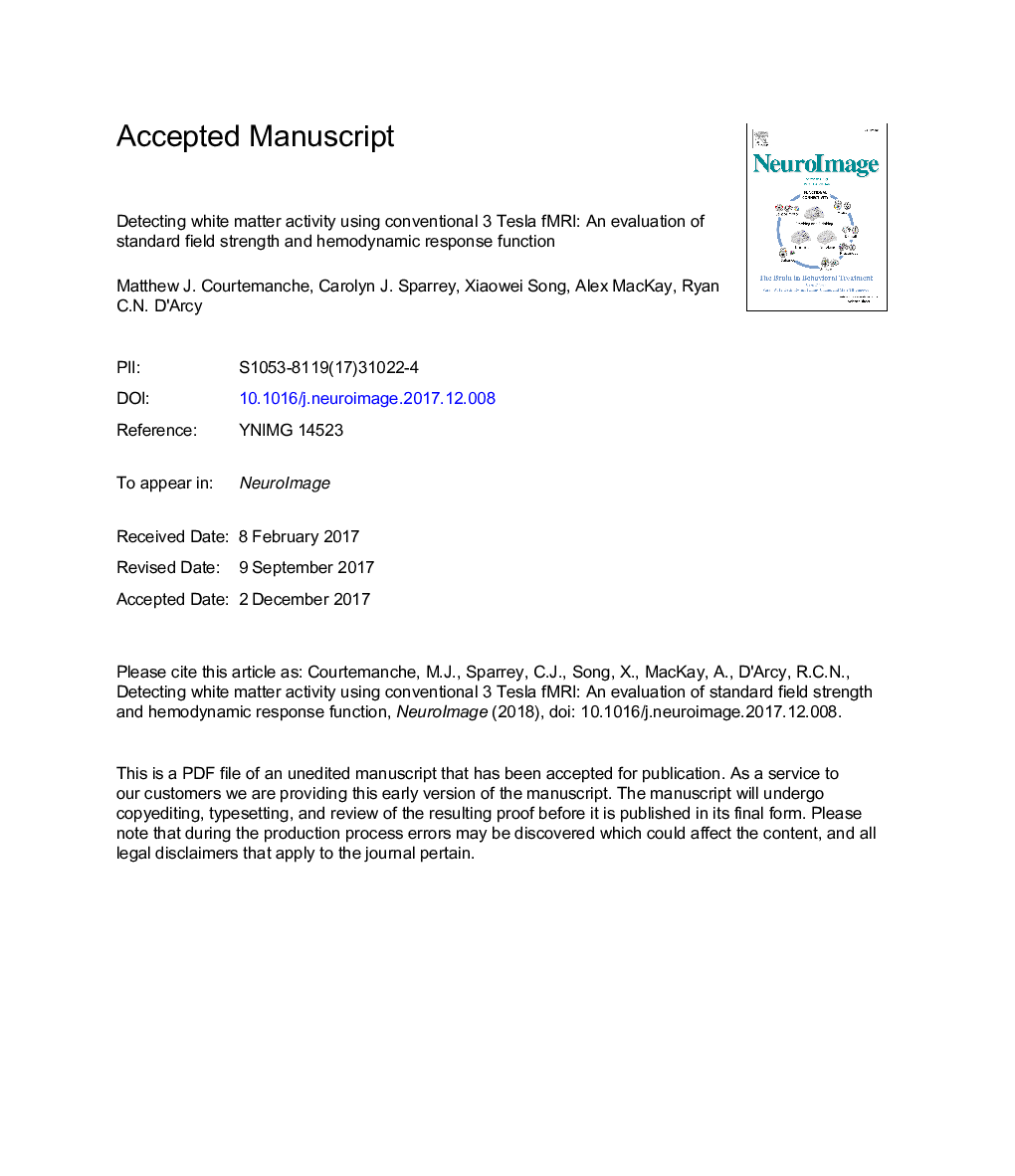| Article ID | Journal | Published Year | Pages | File Type |
|---|---|---|---|---|
| 8687171 | NeuroImage | 2018 | 19 Pages |
Abstract
Detection of functional magnetic resonance imaging (fMRI) activation in white matter has been increasingly reported despite historically being controversial. Much of the development work to-date has used high-field 4Â T MRI and specialized pulse sequences. In the current study, we utilized conventional 3Â T MRI and a commonly applied gradient-echo-planar imaging sequence to evaluate white matter (WM) fMRI sensitivity within a common framework. Functional WM activity was replicated in target regions of interest within the corpus callosum, at the group and individual levels. As expected there was a reduction in overall WM activation sensitivity. Individual analyses revealed that 8 of the 13 individuals showed white matter activation, showing a lower percentage of individuals with WM activation detected. Importantly, WM activation results were sensitive to analyses that applied alternate hemodynamic response functions, with an increase in the group level cluster when hemodynamic response function (HRF) onset slope was reduced. The findings supported the growing evidence that WM activation is detectable, with activation levels are closer to thresholds used for routine 3T MRI studies. Optimization factors, such as the HRF model, appear to be important to further enhance the characterization of WM activity in fMRI.
Related Topics
Life Sciences
Neuroscience
Cognitive Neuroscience
Authors
Matthew J. Courtemanche, Carolyn J. Sparrey, Xiaowei Song, Alex MacKay, Ryan C.N. D'Arcy,
